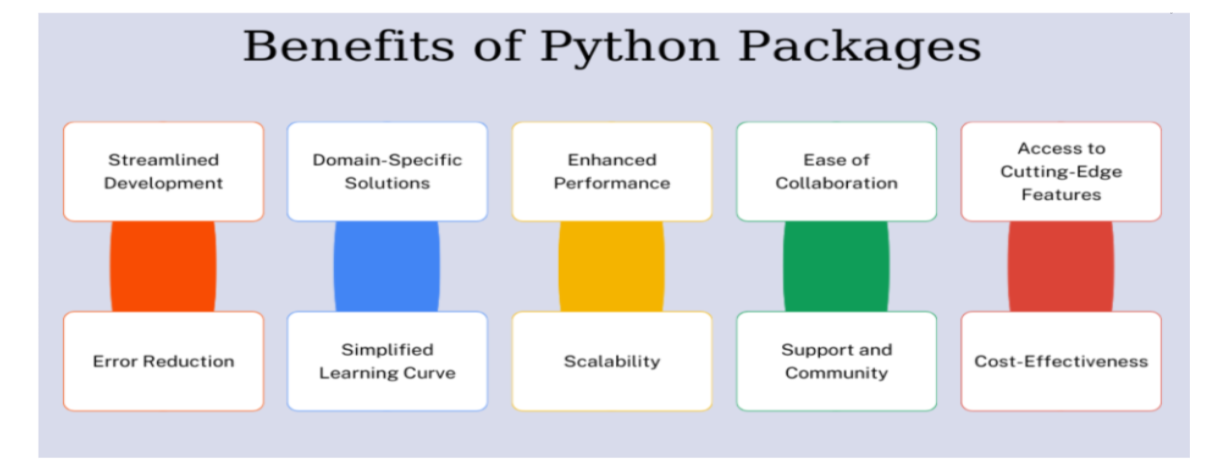Data Exploration python packages
When you begin exploring data in Python, the journey almost always starts with Pandas. It’s the backbone of tabular data manipulation—think of it as your spreadsheet on steroids. You load your dataset into a DataFrame, and from there, slicing, filtering, grouping, and summarizing become second nature. Whether you’re checking for missing values, calculating aggregates, or reshaping your data, Pandas is the tool that gives you control and clarity.
Beneath Pandas lies NumPy, quietly powering the numerical operations. It’s not flashy, but it’s fast. Arrays, matrix operations, and statistical functions—NumPy handles them with precision. If your dataset has any numerical depth, NumPy is the silent partner making it all efficient.
Once you’ve wrangled the data, you’ll want to visualize it. That’s where Matplotlib and Seaborn come in. Matplotlib is the veteran—flexible but verbose. You can plot anything, but you’ll write a lot of code to do it. Seaborn, on the other hand, is the elegant younger sibling. It builds on Matplotlib but adds statistical awareness. Want to see distributions, correlations, or category-wise comparisons? Seaborn makes it beautiful with minimal effort.
But sometimes, you don’t want to manually inspect every column. You want a bird’s-eye view. That’s where automated EDA tools shine. Pandas Profiling is like a full-body scan of your dataset—it generates a rich HTML report with distributions, missing value maps, correlations, and warnings. Sweetviz adds storytelling flair, especially when comparing datasets or analyzing target variables. AutoViz and DataPrep go a step further, detecting data types and generating visual summaries with almost no setup. These tools are perfect when you’re benchmarking datasets or prepping for modeling.
If your data is too large for memory, you’ll need to scale. Dask mimics Pandas but runs in parallel, handling out-of-core computations. PySpark is your gateway to distributed data processing—ideal for enterprise-grade pipelines. And if you want interactivity, Plotly and Bokeh let you build dashboards that respond to user input, hover events, and zoom gestures.
So whether you’re inspecting a CSV, profiling a data lake, or prepping features for a model, Python’s ecosystem offers a layered toolkit. You start with Pandas and Seaborn, reach for profiling tools when speed matters, and scale up with Dask or PySpark when the data demands it. It’s not just about tools—it’s about choosing the right lens for the kind of insight you seek.

Use Cases or problem statement solved with Data Exploration python packages:
1.Sales Data Audit for ERP Integration
Problem Statement:
A retail company wants to integrate its legacy sales system with a new ERP backend. However, the sales data contains inconsistent formats, missing values, and duplicate entries across regions.
Goal:
Clean, validate, and summarize the sales data to ensure it aligns with ERP schema requirements and supports reliable reporting.
Tools & Flow:
- Pandas: Load and clean CSVs, handle missing values, deduplicate records.
- DataPrep or Pandas Profiling: Generate quick EDA reports to identify anomalies.
- Seaborn: Visualize regional sales distributions and outliers.
- Feature Drift Detection in ML Pipelines
Problem Statement:
A deployed machine learning model shows degraded performance. The team suspects feature drift in incoming data compared to training data.
Goal:
Compare distributions of key features between training and live datasets to detect drift and retrain if necessary.
Tools & Flow:
- Sweetviz: Side-by-side comparison of datasets with visual summaries.
- SciPy/Statsmodels: Perform statistical tests (e.g., KS test) for distribution shifts.
- Matplotlib/Seaborn: Plot histograms and boxplots for visual inspection.
- Patient Record Validation for Health Analytics
Problem Statement:
A hospital backend receives patient records from multiple sources. Data inconsistencies in age, diagnosis codes, and timestamps are causing analytics errors.
Goal:
Explore and validate incoming records to ensure schema consistency and prepare for downstream analytics.
Tools & Flow:
- Pandas: Schema enforcement, type casting, missing value handling.
- Pandas Profiling: Quick overview of distributions, missingness, and duplicates.
- Plotly: Interactive dashboards for clinical teams to inspect anomalies.
- Financial Transaction Monitoring
Problem Statement:
A fintech platform needs to monitor transaction logs for suspicious patterns, such as sudden spikes or repeated transfers.
Goal:
Explore transaction data to identify outliers, patterns, and potential fraud indicators.
Tools & Flow:
- Dask: Handle large-scale logs efficiently.
- Seaborn/Matplotlib: Time-series plots, heatmaps of transaction frequency.
- AutoViz: Automated visual summaries for anomaly detection.
- Product Review Sentiment Analysis Prep
Problem Statement:
An e-commerce company wants to analyze customer reviews, but the text data is noisy, unstructured, and lacks metadata alignment.
Goal:
Explore and clean review data to prepare for sentiment analysis and product feedback loops.
Tools & Flow:
- Pandas: Merge review text with product metadata.
- DataPrep.EDA: Text column summaries, missing value maps.
- WordCloud/Seaborn: Visualize frequent terms and sentiment distributions.
Pros of Data Exploration Python packages:
Pandas – Tabular Data Manipulation
- Intuitive DataFrame API for structured data
- Rich functions for filtering, grouping, merging, reshaping
- Seamless integration with NumPy, Matplotlib, and ML libraries
- Strong community support and documentation
NumPy – Numerical Computing Backbone
- Fast, vectorized operations on arrays and matrices
- Foundation for most scientific Python libraries
- Excellent for numerical simulations and linear algebra
Matplotlib – Foundational Plotting Library
- Highly customizable and flexible
- Works in all environments (Jupyter, scripts, GUIs)
- Supports static, animated, and interactive plots
Seaborn – Statistical Visualization
- Beautiful default styles and color palettes
- High-level API for common statistical plots
- Integrates seamlessly with Pandas

Cons of Data Exploration python packages:
Pandas
- Memory-bound; struggles with large or distributed datasets
- Performance bottlenecks in nested loops or large joins
- Verbose syntax for complex transformations
- Limited native support for parallelism or lazy evaluation
NumPy
- Not designed for labeled/tabular data
- Manual reshaping and indexing can be error-prone
- Steeper learning curve for beginners
- Lacks built-in data validation or schema enforcement
Matplotlib
- Verbose and low-level syntax for common plots
- Steep learning curve for advanced layouts
- Limited interactivity and aesthetics out of the box
- Requires manual tuning for responsive visuals
Seaborn
- Limited interactivity (static plots only)
- Less flexible for custom plot elements or dashboards
- Built on Matplotlib—inherits its verbosity and complexity
- Not ideal for real-time or streaming data visualization
Alternatives to Data Exploration python packages:
Pandas → Alternatives
- Polars: Rust-based, blazing fast, supports lazy evaluation
- Dask DataFrame: Parallelized, out-of-core Pandas-like API
- Vaex: Memory-mapped, optimized for filtering and grouping large datasets
- Koalas: Pandas API on Apache Spark (now part of PySpark)
NumPy → Alternatives
- SciPy: Adds statistical, optimization, and scientific computing layers
- CuPy: GPU-accelerated NumPy for high-performance computing
- JAX: NumPy-like API with automatic differentiation and GPU/TPU support
- TensorFlow/PyTorch: For tensor operations in ML workflows
Matplotlib → Alternatives
- Seaborn: Simplifies statistical plotting with better aesthetics
- Plotly: Interactive, web-ready visualizations
- Altair: Declarative grammar-based plotting
- Bokeh: Real-time streaming and dashboard-ready plots
Seaborn → Alternatives
- Plotly Express: Concise syntax, interactive charts
- Altair: Declarative, ideal for statistical and layered plots
- ggplot (Python port): Grammar of graphics-style plotting
- Holoviews: High-level plotting built on Bokeh and Matplotlib
ThirdEye Data’s Project Reference Where We Used Data Exploration Python Packages:
Answering some Frequently asked questions about Data Exploration python packages:
Q1: Which tool should I use for quick exploratory analysis?
Use:Pandas Profiling or DataPrep.EDA
These generate automated reports with distributions, missing values, and correlations in one line.
Q2: What’s best for comparing train/test datasets in ML?
Use:Sweetviz
It offers side-by-side visual comparisons and highlights relationships with target variables.
Q3: How do I handle large datasets that don’t fit in memory?
Use:Dask, Vaex, or PySpark
These tools support parallelism and out-of-core computation for scalable exploration.
Q4: Which visualization tool is best for interactive dashboards?
Use:Plotly or Bokeh
They support zooming, hovering, and embedding in web apps or notebooks.
Q5: Can I use these tools in a backend pipeline?
Yes.
Pandas, Dask, and DataPrep are modular and scriptable—ideal for backend diagnostics, feature prep, and schema validation.
Q6: What’s the fastest alternative to Pandas for large tabular data?
Use:Polars
It’s Rust-backed, supports lazy evaluation, and is significantly faster for filtering and grouping.
Conclusion:
Python’s data exploration ecosystem is rich and layered—offering tools for every scale, style, and use case. Whether you’re auditing ERP data, prepping ML features, or benchmarking datasets, the right tool depends on your goals:
- Pandas + Seaborn for granular control and statistical visuals
- Pandas Profiling, Sweetviz, DataPrep for automated diagnostics
- Dask, Vaex, PySpark for scalable, distributed workloads
- Plotly, Altair, Bokeh for interactive, presentation-ready insights
As a backend architect, you can mix and match these tools to build modular, maintainable pipelines that support both manual inspection and automated reporting. The key is to align tool capabilities with your deployment constraints and exploration depth.




